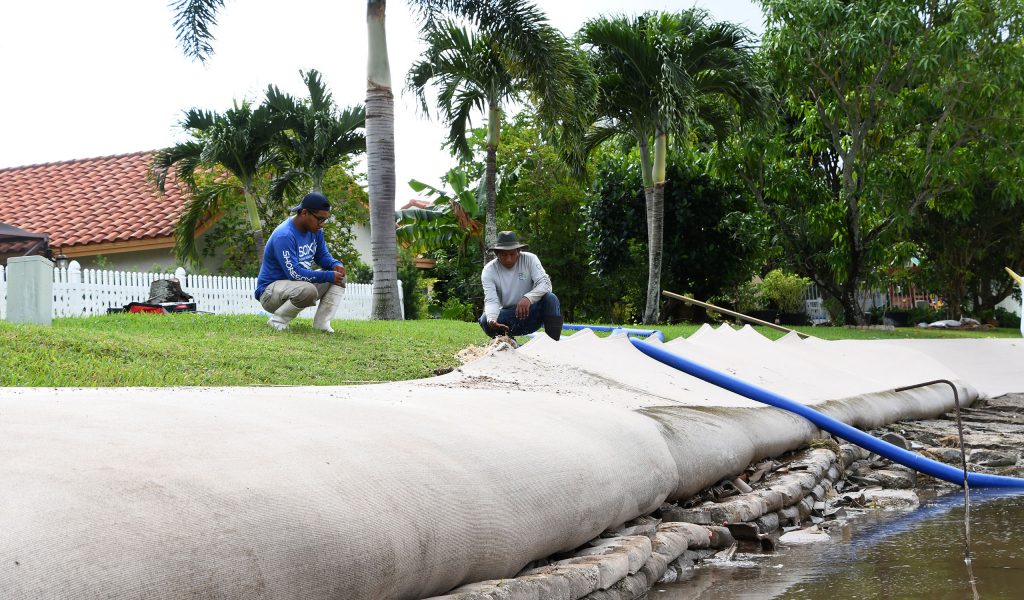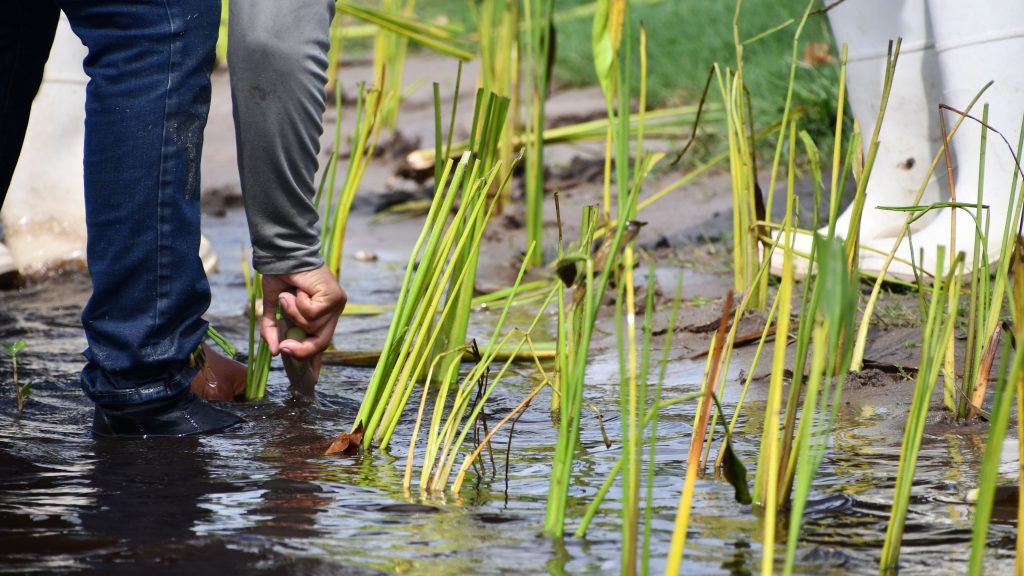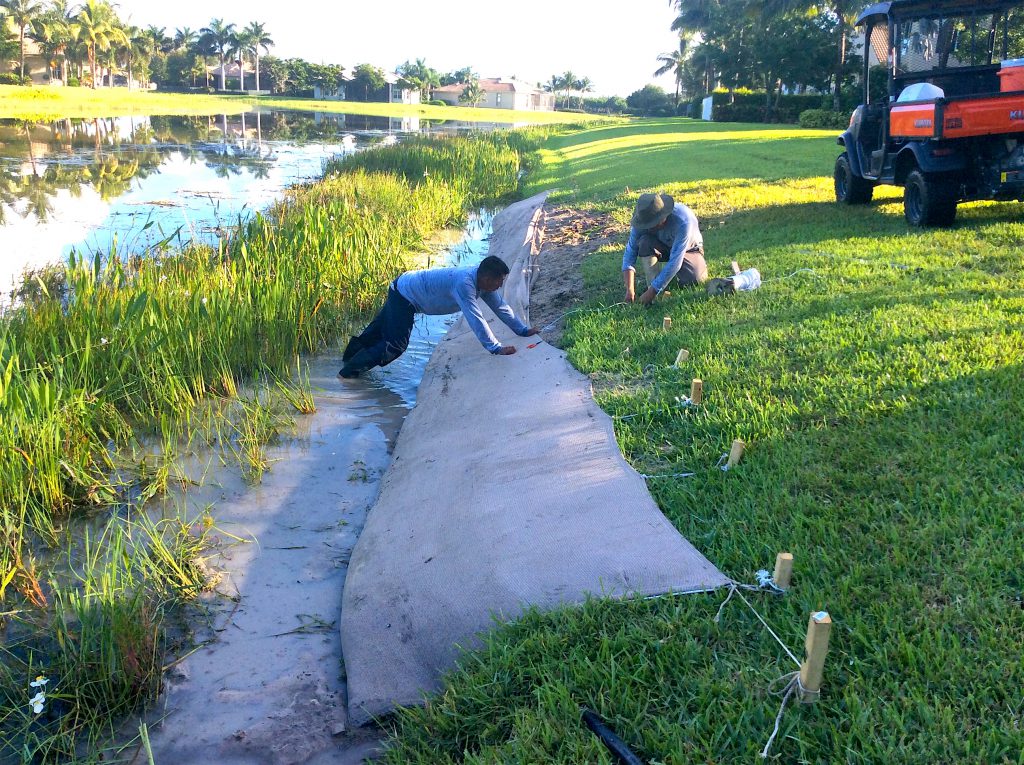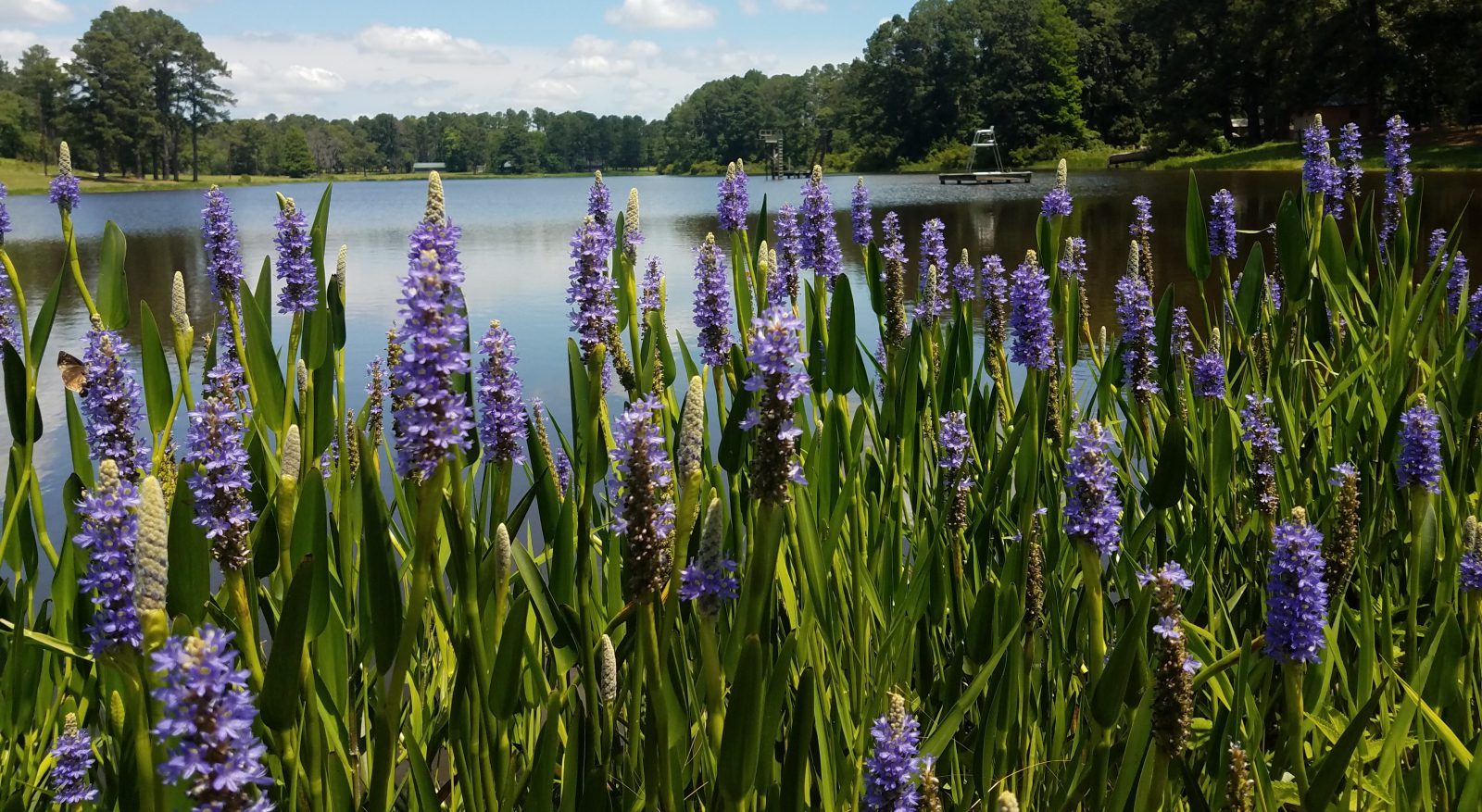
Different Types of Soil Erosion & How to Prevent Them
We’ve all spent time making memories around the water. During those special moments, we’ve watched wildlife frolic in their natural habitats, felt the spray of wind and water, and skipped rocks across the surface. And, no doubt, we’ve all witnessed the inevitable decline of a lake or pond’s shoreline.
Soil erosion is often a very slow process; however, it can happen at an alarming rate depending on many human and environmental factors. Soil erosion negatively affects water quality and the aesthetic appeal of lakes and ponds, but it can also cause significant damage to important subsurface components like pipes, stormwater equipment, irrigation lines, or bottom aerators.
Understanding the different types of erosion is crucial to protect our water resources and prevent problems from compounding over time:
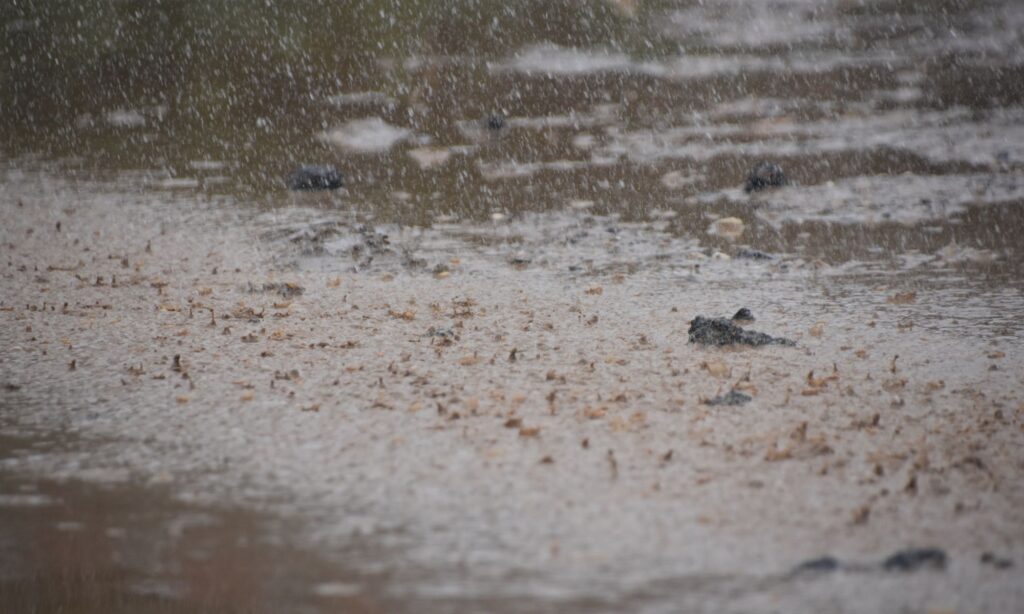
Splash Erosion
Splash erosion is one type of soil erosion caused by raindrops falling onto the land, causing topsoil to disintegrate into tiny, individual particles. The detached particles then form a crust on top that easily flows off when it is rainy or windy.
Sheet Erosion
Sheet erosion is another type of soil erosion that occurs when the thin upper portion of the soil is displaced, usually due to heavy rain or water runoff. During this process, desirable nutrients and organic matter are lost. This kind of soil erosion is gradual and often goes unnoticed until large portions of soil are displaced. Likewise, if the vegetation cover is also degraded, the soil will erode at a much faster rate, so it’s important to maintain the health of native plant species.
Signs to look out for include:
- Puddles of water that emerge after rainfall
- Bare patches in the soil
- Visible roots of grass and trees
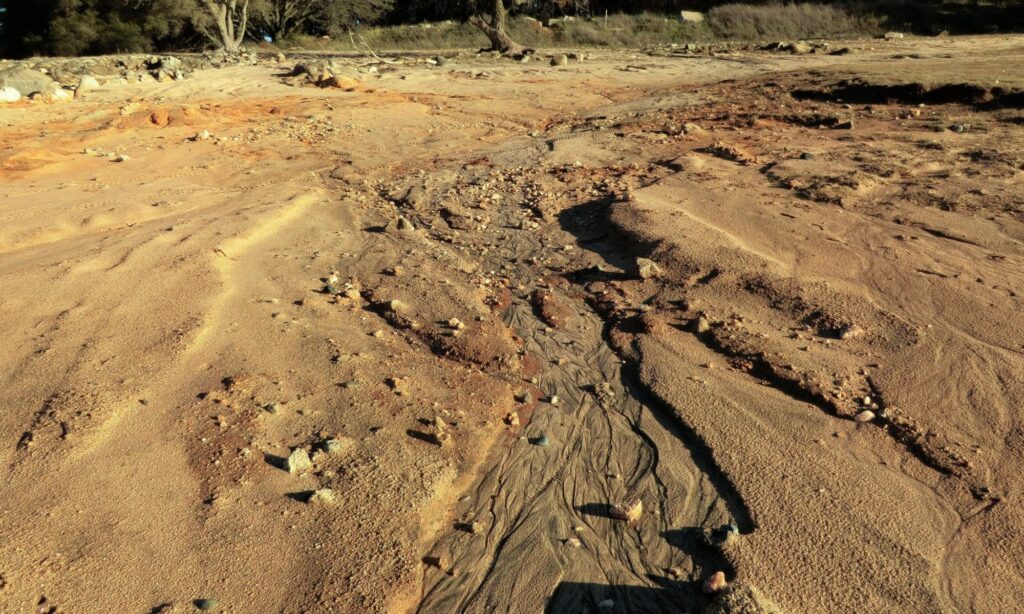
Rill Erosion
Rills are shallow drainage channels that form as rainwater flows into depressions in the land. Over time, the depressions created by this type of soil erosion can widen during each rainstorm, which, in turn, can make the landscape even more prone to erosion. It’s possible to reduce the likelihood of rill erosion by establishing waterways containing grass, mulching, and contour drains.
Water Erosion
Water flowing along a pathway can cause soil erosion that deepens valleys or extends them into the hillside. As the water flows, it creates head cuts or steep banks. In the beginning, the erosion is mainly vertical, creating valleys with a v-shape. As the gradient continues to become steeper, the erosion switches to a lateral direction. This type of soil erosion may widen the floor of the valley and shrink the floodplain.
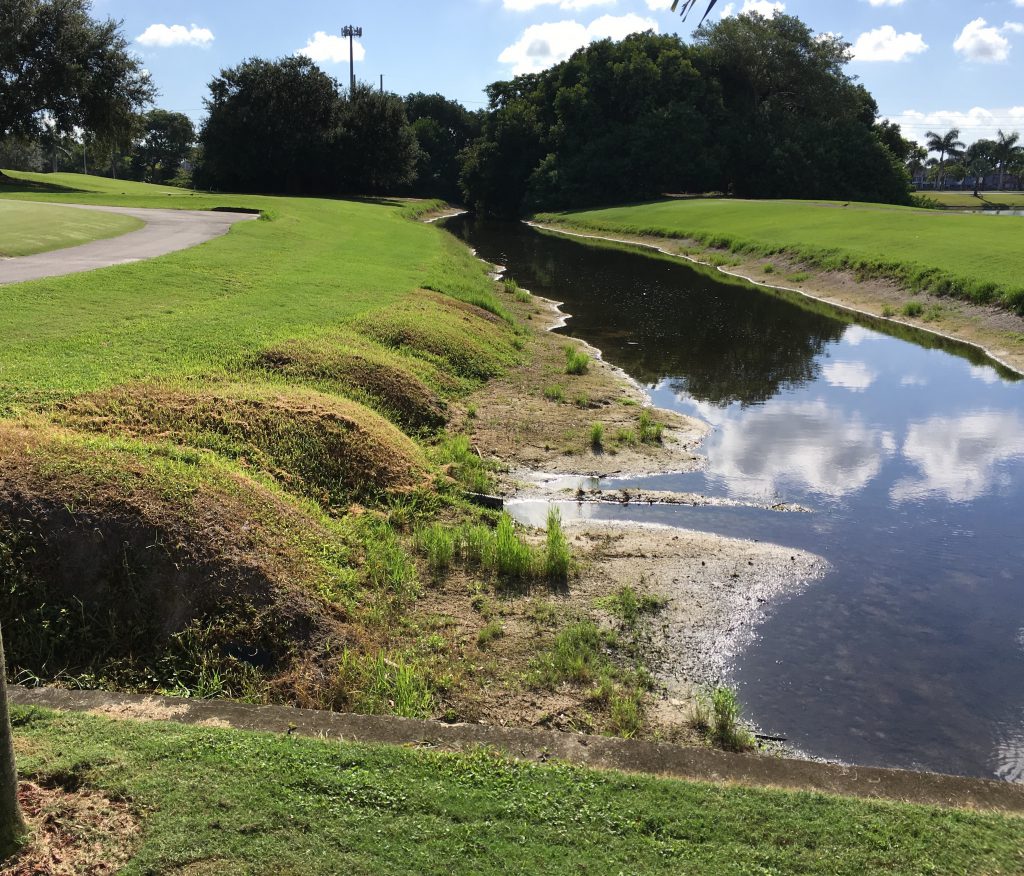
Gully Erosion
The worst type of soil erosion, gully erosion, occurs when runoff flows strongly and is concentrated in one location. In many cases, gullies begin as a rill that transitions into a small “waterfall” that is strong enough to eat away topsoil. As water picks up energy, the gully’s slopes become steeper. This type of soil erosion is very visible and damaging. It often has a drastic effect on the productivity of the soil and can make the land unusable.
Gullies can range from 2m (just under 79 inches) to 10-15m (under 393-590.5 in) in depth. Gullies often stem from many different things, such as:
- Improper waterway design, construction, and maintenance
- Deforestation or removal of vegetation
- Livestock cultivation and grazing
- Increased runoff due to the clearing of trees
- Gradual seepage over time
- Drainage lines diversion
Tunnel Erosion
Tunnel erosion occurs when water runs through a small hole or crack where plant and tree roots have decayed. A small tunnel is formed as the subsoil is carried away. Initially, the surface soil structure remains untouched, but as the water flows through over time, the tunnel gets larger. The top of the tunnel eventually collapses and creates a gully. This process continues to accelerate as the inner layer is further exposed to the water flow. The mix of clay, silt, and sand can start to shift, which results in sediment loss.
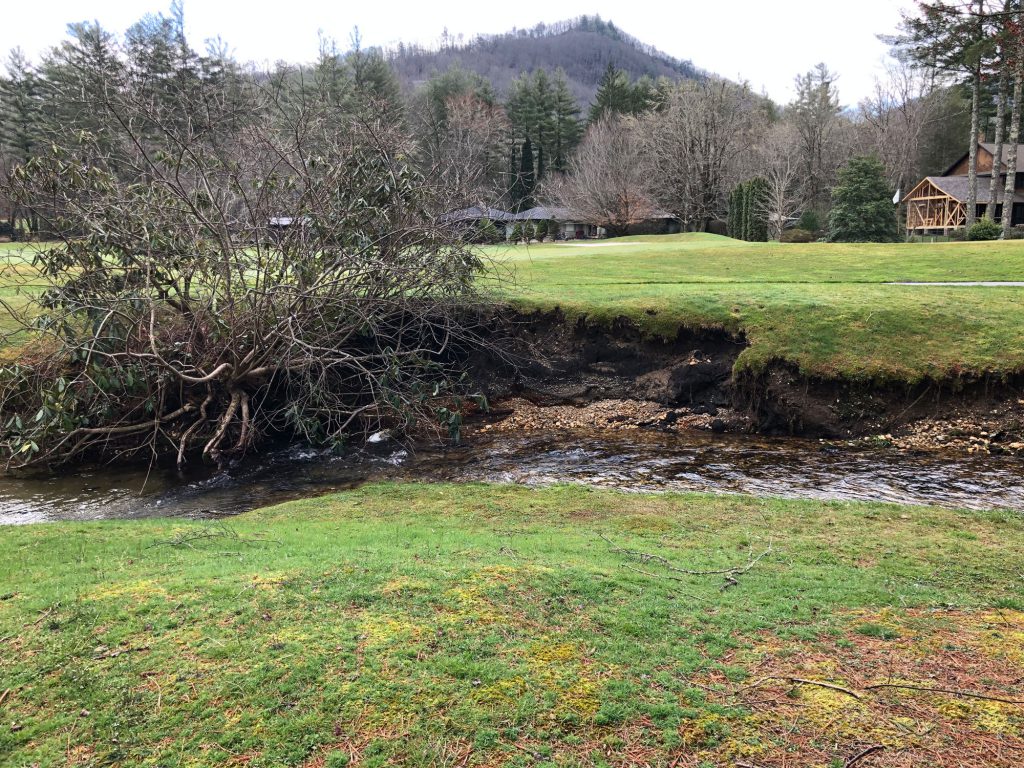
Bank Erosion
When the banks of rivers or ponds wear away, this type of soil erosion is called bank erosion. Flooding can make bank erosion worse and cause the soil on the bank to be removed entirely. One of the biggest causes of bank erosion is the removal of vegetation along the edges. Bank erosion can also be caused by:
- Vehicle or human traffic on the bank
- Lowering of the water level in lakes, ponds, or reservoirs
- Flooding of the soils along the bank
- Waves caused by boats or wind
- Rapid water flow
Bank erosion can be very critical in some areas and may even cause human displacement.
Ways to Prevent the Various Types of Soil Erosion in Lakes & Ponds
If you have a lake or pond on your property, its beauty and utility are probably a highlight of where you live. But your enjoyment of it might be temporary if you don’t take action to prevent soil erosion. Effective ways to prevent lake and pond erosion include:
Install Native Plants and Vegetation
Planting native plant species along the shoreline helps keep the soil in place and prevent soil erosion. Native, flowering plants tend to do well with very little clipping or mowing, and create a natural habitat for wildlife and fish species. Choose plants with deep root systems that will hold the soil and are hard to uproot during storms and other weather events.
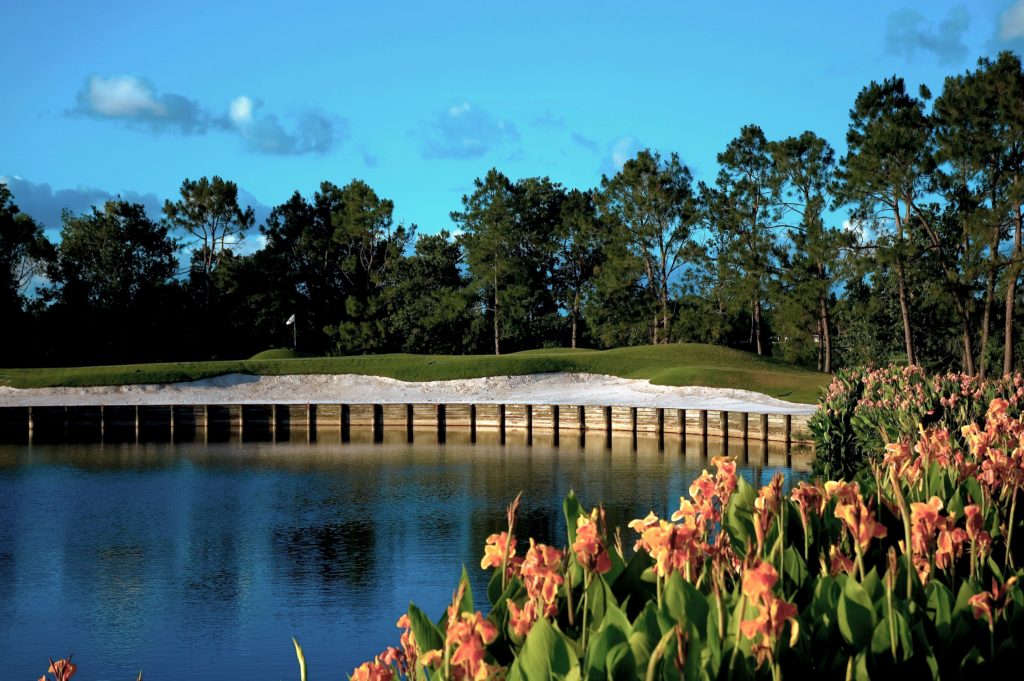
Bulkheads and Retaining walls
Bulkheads and retaining walls are often used to control erosion in lakes and ponds that have banks with steep slopes. These are often expensive construction projects that require easements and rights-of-way from adjoining properties. They are often considered a last resort option for properties with difficult erosion problems.
Benefits of Professional Soil Erosion Control
When seeking out ways to control shoreline erosion, consider working with a freshwater management professional who is knowledgeable about native plants and experienced in bioengineered shoreline installations. These are not do-it-yourself projects. Trained professionals will know the best methods for mitigation and control of all types of soil erosion, so you can keep your waterbodies healthy, beautiful, and entertaining for members of your community.
Discover the Benefits of Shoreline Management
SOLitude Lake Management is a nationwide environmental firm committed to providing sustainable solutions that improve water quality, enhance beauty and preserve natural resources.
SOLitude’s team of aquatic scientists specializes in the development and execution of customized lake, stormwater pond, wetland and fisheries management programs. Services include water quality testing and restoration, algae and aquatic weed control, installation and maintenance of fountains and aeration systems, shoreline erosion control, muck and sediment removal and invasive species management. SOLitude partners with homeowners associations, golf courses, private landowners, businesses and municipalities. SOLitude Lake Management is part of Rentokil, a leading business services company, operating across the United States, Canada and Puerto Rico.
For more information, visit SOLitude Lake Management at solitudelakemanagement.com, and connect on Facebook, LinkedIn and Twitter.








